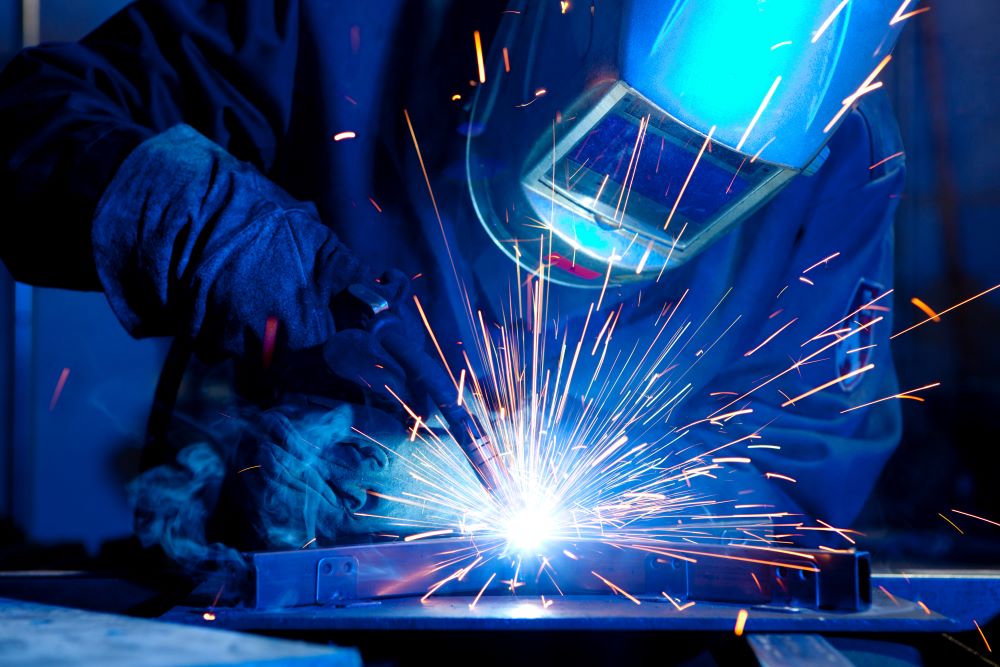Comprehending Welding WPS: Comprehensive Overview for Welders
The Ultimate Guide to Welding WPS Procedures: An Extensive Summary for Welders
In the elaborate globe of welding, Welding Procedure Specifications (WPS) offer as the backbone of guaranteeing high quality, consistency, and safety in welding operations (welding WPS). As we delve right into the numerous elements of a WPS and check out the complexities of qualification and accreditation, we will reveal the essential duty these treatments play in the realm of welding.
Importance of WPS Procedures
Recognizing the relevance of Welding Treatment Specs (WPS) procedures is essential for guaranteeing the quality and honesty of bonded structures. WPS treatments act as a roadmap for welders, describing the required actions, parameters, and materials needed to accomplish a sound weld. By sticking to WPS guidelines, welders can make sure consistency in their job, resulting in dependable and structurally sound welds.
One of the main factors why WPS treatments are essential is their function in preserving weld quality and honesty. Complying with the specified welding parameters and strategies laid out in the WPS helps protect against problems such as porosity, splitting, or insufficient fusion, which can jeopardize the stamina and resilience of the weld.

Parts of a WPS
A Welding Procedure Specification (WPS) normally comprises important components that detail the specific needs for performing a weld, making certain uniformity and high quality in the welding procedure. The vital elements of a WPS consist of necessary variables such as base metals, filler steels, preheat and interpass temperature levels, welding processes, securing gases, welding settings, and post-weld warm therapy demands.
Base steels refer to the materials being signed up with, while filler metals are used to load the space between the base steels throughout welding. The welding procedure outlines the particular method to be utilized, whether it's gas steel arc welding (GMAW), secured steel arc welding (SMAW), or another method. Welding positions define the orientations in which welding can be carried out.

Certification and Qualification
Having actually established the essential parts of a Welding Treatment Spec (WPS), the focus now changes in the direction of the important facets of credentials and qualification in welding practices.

Qualification, on the other hand, is the formal acknowledgment of a welder's qualifications by an appropriate accreditation body or company. Welding certifications are normally based on the particular welding procedures, materials, and settings a welder is certified to collaborate with. Holding a valid welding accreditation shows that a welder meets market criteria and is competent to carry out welding jobs to the needed specifications.
Developing a WPS
To develop a Welding Procedure Spec (WPS) that meets market standards, careful consideration of welding processes, products, and operational parameters is vital. The very first step in creating a WPS is to identify the welding procedure to be made use of, such as gas steel arc welding (GMAW) or protected metal arc welding (SMAW)

Executing and Checking WPS
Upon finalizing the extensive Welding Procedure Spec (WPS) that thoroughly information welding processes, materials, operational specifications, and quality control procedures, the emphasis moves to successfully applying and keeping an eye on the well established treatments. Application includes ensuring that all article welders entailed in the job recognize with the WPS and follow it thoroughly during the welding procedure. This needs offering adequate training and supervision to assure adherence to the specified procedures. Keeping track of the WPS includes continual oversight to confirm that welding tasks straighten with the documented specifications. Inspections, testing, and quality control measures are important parts of the surveillance process to recognize any problems or variances without delay. Routine audits and evaluations of the welding treatments assist in maintaining consistency and top quality throughout the task. Reliable implementation and surveillance of the WPS are crucial for making sure the honesty, strength, and safety of the welded joints, inevitably contributing to the total success of the welding project.
Conclusion
Finally, understanding and complying with Welding Procedure Requirements (WPS) is critical for welders to make certain high quality, uniformity, and security in their work. By recognizing the elements of a WPS, getting appropriate qualifications and qualifications, producing thorough procedures, and executing and monitoring them successfully, welders can improve their abilities and proficiency in welding methods. Sticking to WPS treatments is necessary for generating premium welds and meeting industry standards.
In the intricate globe of welding, Welding Treatment Specifications (WPS) offer as the foundation of making sure quality, uniformity, and safety in welding operations. The welding process details the details strategy to be made use of, whether it's gas steel arc welding (GMAW), secured metal arc welding (SMAW), or one more approach.To develop a Welding Procedure Specification (WPS) that meets industry standards, mindful factor to consider of welding procedures, materials, and functional criteria is necessary. The first step in producing a WPS is to identify the welding procedure to be used, such as gas metal arc welding (GMAW) or secured metal arc welding (SMAW)Upon completing the detailed Welding Treatment Requirements (WPS) that meticulously details welding processes, materials, operational specifications, and high quality assurance measures, the emphasis shifts to effectively carrying out and keeping an eye on the well-known treatments.